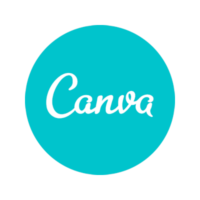Checklist Design – Best practices for UI/UX design
Today’s Internet age is seeing an emergence of several technological advancements. The audience nowadays wants to experience the best tech features without giving too much thought. Users are constantly looking for variety in interfaces, and at the same time, they get fed up easily when it becomes too complex. This is particularly true when it comes to websites and mobile applications.
In such scenario, following a standard template becomes really important. With proper reference in place, designers can maintain the familiarity and simplicity among elements of user interfaces and look to innovate with interactive nature of these elements.
There are several tools and resources that UI/UX can draw inspiration from and these tools play an important role in prototyping and finalizing designs. One of the best among them is Checklist Design.
Checklist Design: The checklist you need for your design considerations
Checklist design aims at providing designers a detailed reference, listing out all the requirements a UI element must possess so they can maintain a right mix of variety and simplicity in their designs. Let’s look at some of the feature’s checklist design provides:
- Several topics like Responsiveness and typography that cover best practices designers must incorporate in their designs.
- Collection of windows and screens for a website and mobile applications like login page, signup, contact us, etc.
- List of UI components like Buttons, Models, Tables and Icons that are bound to be part of every desktop and mobile application.
- It also offers step-by-step breakdown of standard flows within an application. For instance, if you want an effective way to let your users know that they have entered a wrong spelling while typing, you can do so following Checklist Design’s indicated flow.
Checklist design lets you define a seamless flow that you can follow, where users can be made aware of this through obvious visual representation.

How it works
UI/UX designers can often make mistakes while designing applications. Having a list of standard practices they can follow simplifies the design process to a great extent. Checklist Design serves as a great reference where designers can think of focusing of innovation rather than be concerned about the things they might miss.
So, let’s see how this tool does the trick for UI/UX designers.
- Simply head to their website. The website has a simple interface with the homepage listing all the design considerations you may want to refer to while designing.
- As you scroll down the homepage, you will notice headings that basically list out several design practices like UI elements, application flow, etc.
- The first thing a designer may start with is drafting pages or windows of the application. For this you can scroll down to heading ‘Website and apps’ that lists the collection of pages that are usually common among applications.
- For instance, if you want a login page for your application as the first window, you can simply refer to the list under this heading and will find ‘Login’ page there. Click on ‘Login’ entry and it will lead to opening of new webpage.
- At first you should take note of all the minimal features your login page must have like logo, title, account identification and password; there’s a complete list for you. Apart from this there are several resources listed on right side of the webpage that you can use to draw inspirations from.
- You can go on drafting several such pages from the list on homepage.
- Now that you have looked into the pages and finalized on a rough draft, you might want to look at the UI elements your application must have. They are listed on the homepage of the website under same heading as pages. The UI elements include buttons, text fields, cars, icons and tables to name few among the extensive list.
- So, once you have setup your individual pages with interactive UI elements, the final thing is to look into the flow of various user stories of your application.
- This is listed under ‘Flows’ on the homepage where you will find defined steps your certain user story must follow. Generic user stories listed include opening/closing an account, contact support, and resetting password.
- Apart from finalizing these basic elements of your application you can also incorporate extensive features like responsive design, and dark modes in your application using Checklist design’s list.
- All applications must have a responsive design, so the operation is seamless irrespective of the device you are on. So, when you click on Responsiveness under ‘topic’ heading on homepage, it will lead you to another webpage where it lists features in the form of checklist that you must have in your application for it to be responsive.
- On the right side of this webpage you will notice ‘Resources’ that you can refer to expand your knowledge. It lists several articles and tools that can be used in your design application.
There you have it, Checklist Design tool enables you to incorporate all basic and standard elements in your designs so that you don’t have to worry about user interaction complications in product release.
Highlights
- Standard checklist for various UI elements and UX design.
- Seamless reference flows and step by step user stories for your application.
- Design resources and articles with external links.
- Absolutely free, simply head to website and use the resources.
Boon for UI Designers – A checklist of must haves! Try “Checklist Design” checklist.design/via @supermonitoring
Final Word
UI/UX design is becoming a challenging job when it comes to designing applications that incorporate latest technological elements and at the same time are simple for users. Regardless of how experienced you are with the design process, you are bound to make mistakes when designing highly responsive applications. This is where having a standard checklist works wonders.
Checklist Design effectively defines minimal requirements for your application so that you can focus on the interactive nature of the design elements.







